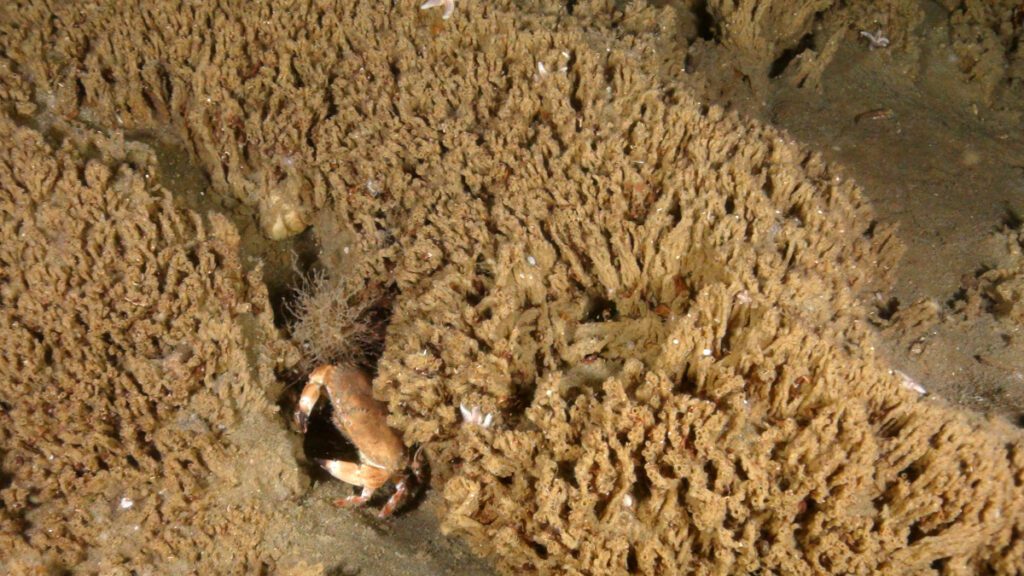Report | November 23, 2018
Discovery of Sabellaria spinulosa reefs in an intensively fished area of the Dutch Continental Shelf, North Sea

Abstract
The tube-building polychaete Sabellaria spinulosa (Ross worm) can form conspicuous biogenic reefs that stabilize the seabed and increase biodiversity by providing a habitat for a multitude of other species. These reefs, however, are assumed to be vulnerable to human-induced physical disturbances of the seabed. In the Greater North Sea, S. spinulosa reefs are recognized to be under threat and worthy of protection. In August 2017, three S. spinulosa reefs with a minimum extent of 1016 m2 were discovered in the Dutch Brown Bank area. This area comprises a large-scale sandbank and adjacent troughs. The reefs were found within the sandbank troughs, which have proven to be subject to high demersal fishing intensities (fished >5 times a year). Detailed bathymetry measurements showed that S. spinulosa reefs were mainly located within valleys of smaller-scaled sand waves, which have a perpendicular orientation compared to the large-scale sandbank structure of the Brown Bank. We hypothesize that the valleys in between sand waves offer suitable substrate for settlement and refuge from abrasion by fishing activities, enabling the S. spinulosa reefs to persist despite high fishing intensities. ROV footage of the reefs showed higher estimates of species abundances on the reefs compared with adjacent habitats, with some species present that are typical for hard substrate (rock gunnel, Pholis gunnellus; edible crab, Cancer pagurus; and velvet swimming crab, Necora puber). The information presented could be used for drafting management policies to protect these reefs, as Contracting Parties of the OSPAR Convention are committed to take measures and protect biodiversity.
Article published by Journal of Sea Research, November 16, 2018
Read the full article here (via Science Direct)

